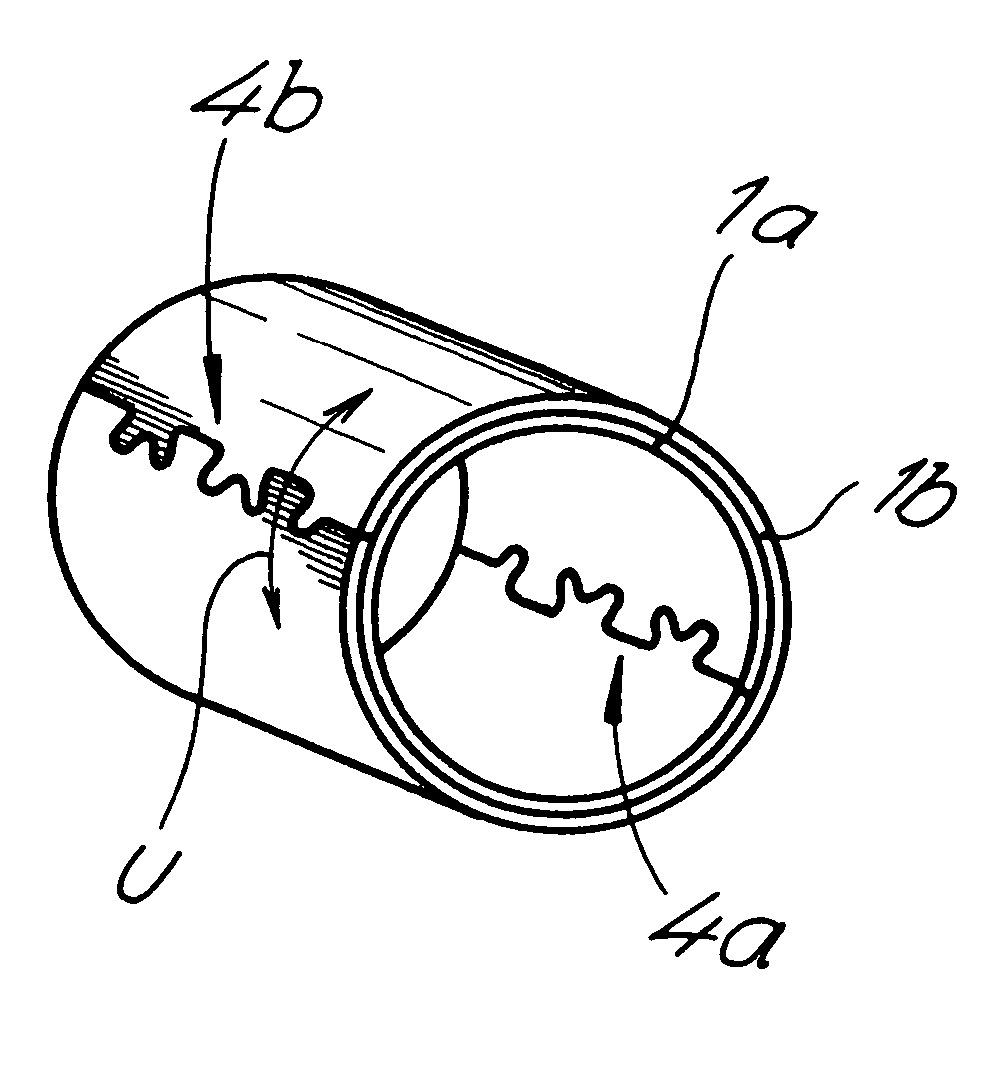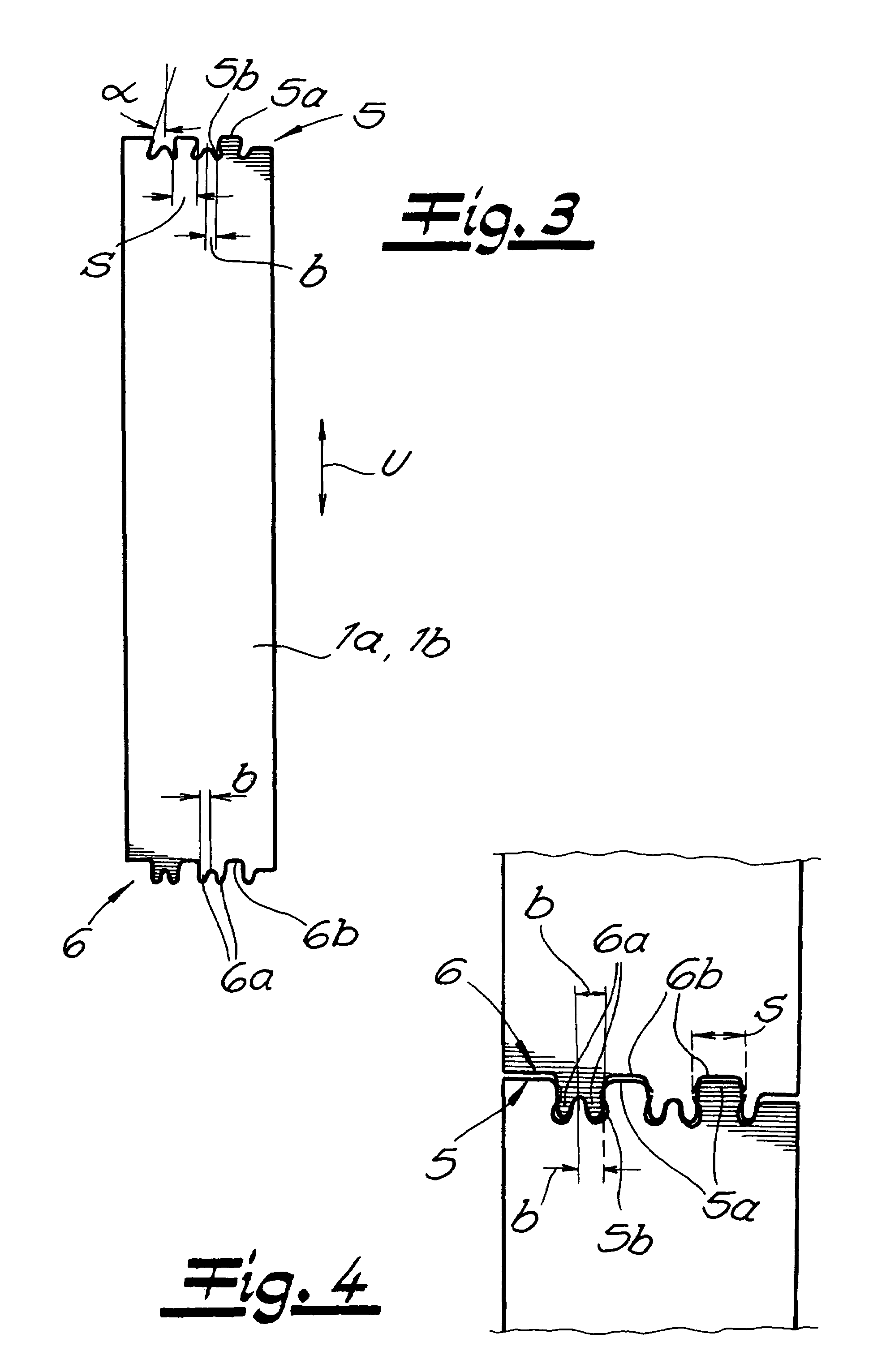Bearing, particularly rubber bearing
a bearing bushing and rubber technology, applied in the field of bearings, can solve the problems of cracks or weakening of the rubber body, weakened rubber body enclosed by the bearing bushing via embossing the two shells with one another, etc., and achieve the effect of preventing damage to the rubber body and simple production
- Summary
- Abstract
- Description
- Claims
- Application Information
AI Technical Summary
Benefits of technology
Problems solved by technology
Method used
Image
Examples
Embodiment Construction
[0030]The drawings show a bearing, according to the exemplary embodiment a rubber bearing. The bearing has, as shown in FIG. 2, a bearing bushing 1, which is configured, without restriction, as a vulcanization carrier 1. The bearing is reinforced and / or attached in a bearing accommodation, a bearing eye, etc., using bearing bushing 1. Within the scope of the exemplary embodiment, bearing bushing 1 ensures that a rubber body 2 made of an elastomer plastic provided within its interior and merely indicated encloses a profile rod 3, damping it. This profile rod 3 can be, without restriction, a steering rod of an axle bearing.
[0031]On the basis of FIG. 1, it is best evident that bearing bushing 1 has two longitudinal parting lines 4a, 4b, in each instance. One can see that the two longitudinal parting lines 4a, 4b are fitted with a complementary edge profile 5, 6, in each instance, on adjacent longitudinal edges, in each instance. Each edge profile 5, 6 has tines 5a, 6a that engage into ...
PUM
| Property | Measurement | Unit |
|---|---|---|
| diameters | aaaaa | aaaaa |
| circumference | aaaaa | aaaaa |
| diameter | aaaaa | aaaaa |
Abstract
Description
Claims
Application Information
 Login to View More
Login to View More - R&D
- Intellectual Property
- Life Sciences
- Materials
- Tech Scout
- Unparalleled Data Quality
- Higher Quality Content
- 60% Fewer Hallucinations
Browse by: Latest US Patents, China's latest patents, Technical Efficacy Thesaurus, Application Domain, Technology Topic, Popular Technical Reports.
© 2025 PatSnap. All rights reserved.Legal|Privacy policy|Modern Slavery Act Transparency Statement|Sitemap|About US| Contact US: help@patsnap.com



